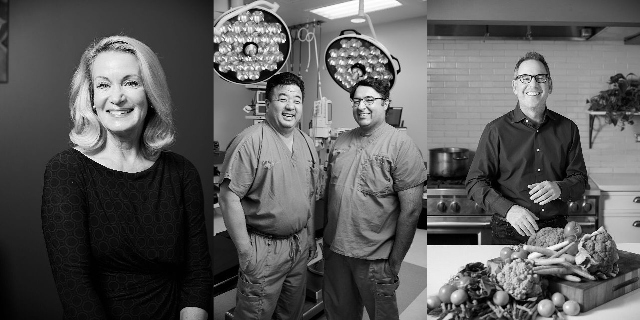
Photos by Michael Williams
From distinguished doctors looking to change the landscape of healthcare to elite high school athletes well on their way to becoming household names, let us introduce you to 31 of the Valley’s most influential men and women.
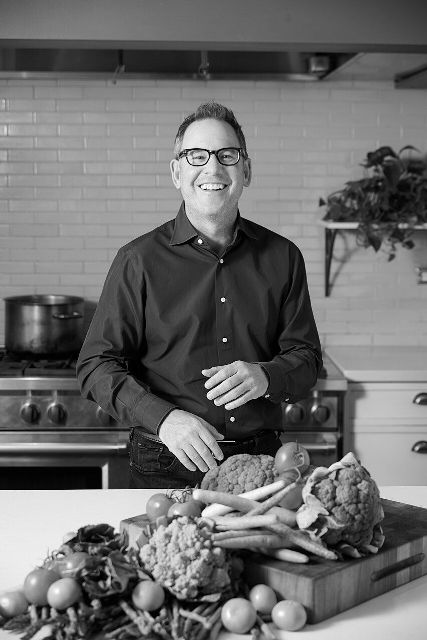
Photo by Michael Williams
Sam Fox
In 1998, Fox opened Wildflower in Tucson—and thus the story of Fox Restaurant Concepts (FRC) began. With Fox at the helm, FRC now has more than 50 restaurants nationwide—and the locations keep coming with 15 openings slated for next year.
You had a very early start in your career. Have you always been a driven person?
My whole life. I was always figuring out a way to run a business and make a little money from elementary school through high school. I dropped out of college when I was 20 to open my own restaurant.
Why do you think you have been so successful in your career?
We never take passes. We work super hard at trying to get this right every single day but not afraid to make mistakes. I have made mistakes along the way that I have learned from, and that has helped me in my career.
What is the most rewarding part of your career?
Working alongside the talented people we have in our organization. We serve almost 100,000 meals in a week, and we have close to 4,000 employees. We have had a lot of people who have been here since day one who have grown their career, from dishwashers to executive chefs, hostesses or servers to running part of the company.
The design of your restaurants is as much a hallmark of FRC as the food.
Design is equally as important as hospitality, service, food. Today, to be successful you need to be able to have all the little details down. We talk about creating an amazing environment where people want to go and how they feel when they are in the space and what the feeling evokes, and how that relates to the staff, to the menu and to the message we’re trying to get across.
How do you decide where your next concept will be?
There is an art and science to that. The science is the demographics, the trade population, identifying who your guests are. But there is a lot of art to it. There can be great areas that have bad locations so understanding the community you are working in or looking to do business in is super important. A lot of that is based on a feeling. A lot of risk goes into that. You have to depend on your knowledge but also listen to your instinct.
What’s next for FRC?
We have a busy year. Blanco will be expanding outside of Arizona this year, which is exciting for us. We are opening one in September in San Diego and another in November in Houston. We are continuing to grow Flower Child and North around the country and having some great success with that. We are building a new Culinary Dropout in Gilbert and another in North Scottsdale, where we will update the look and vibe. Next year, we have 15 new openings around the country, including our second out-of-state location of The Henry in Dallas.
What influence do you hope to have on the Valley?
We want to create spaces that people can gather and that become meaningful to them. A place where they can have business meetings, celebrate with friends, spend time with their family and go on dates. We want to be the setting for those moments.
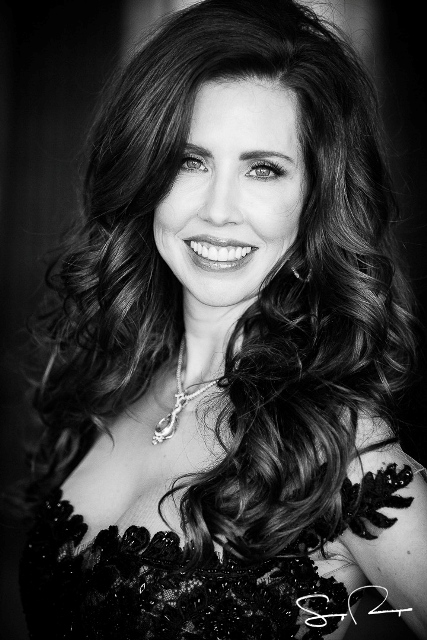
Dr. Stacie J. Stephenson
Dr. Stephenson, DC, CNS, DABAAHP, FAARM, serves as chair of Functional Medicine for Cancer Treatment Centers of America (CTCA) and as a board member of Gateway for Cancer Research (Gateway), a nonprofit committed to funding innovative cancer research studies to benefit today's cancer patient. The physician and lecturer focuses on regenerative, lifestyle, functional and innovative natural medicine.
Where does your interest in natural and nutrition-based medicine stem from?
Being certified in functional medicine and nutrition as a practicing chiropractor, I have been fortunate to be able to apply my education and experiences within these fields. Nearly 15 years ago, I created the Carmel Clinic for Functional Medicine in my home state of Indiana. I strongly support functional medicine, where the patient is treated as a whole, internally and externally.
Tell me about Gateway for Cancer Research.
As founder of CTCA in 1988, which furthers Patient Empowered Care, my husband continued his crusade in memory of his mother, who lost her battle to cancer, by establishing Gateway. Gateway connects renowned researchers to courageous patients seeking meaningful and breakthrough clinical cancer trials. Through generous underwriting from CTCA, 99 cents of every dollar Gateway receives funds Phase I and II clinical trials for all cancer types. The vision of Gateway is to shape a world in which a cancer diagnosis is no longer feared.
Philanthropy is a big part of your life. How do you decide which causes to devote to?
For me, it is about creating a world where people feel good and live well. Whether it be individuals fighting for their very lives from cancer or other diseases or supporting children of neglect, we are all in this together. For those of us who are fortunate enough to have the wherewithal to give our time and dollars, we have the opportunity to revolutionize treatments and create a healthier, safer world.
What is the most rewarding part of your career?
I am grateful to be able to contribute in the Gateway mission to “help people living with cancer to feel better, live longer and conquer cancer today.” Witnessing major medical breakthroughs in cancer treatment inspires me. For example, a Gateway-funded Phase I clinical trial recently completed by Dr. Sarah Leary of Seattle Children’s Hospital utilized a florescent light to target cancer cells in pediatric brain cancer. A Phase II trial is currently planned to enroll many more leading cancer centers throughout the country to continue this research.
Is more growth/additional locations planned for CTCA?
CTCA Phoenix just added two outpatient care centers in the Phoenix area—with plans for a third.
What are some of your free-time passions?
I share a passion with my husband for the equestrian arts focused predominantly at our home in Barrington Hills, Ill. We follow a very unique equestrian discipline of coaching and carriage driving and participate in national and international equestrian coaching experiences. In addition to the equestrian disciplines we love to experience nature on our horses, trail riding through the grounds of our home. I also love being near the ocean. And despite my worldwide quest to work on the cancer question, my guilty pleasure remains enjoying fashion and fine dining in Paris…but don’t tell anyone!
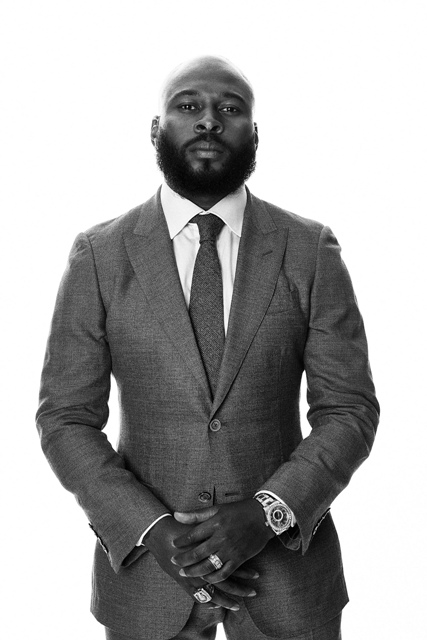
Antoine Bethea
Any football-loving household will know Bethea as a safety for the Arizona Cardinals. But did you know this star player is also the CEO and founder of Safe Coverage Foundation, which encourages kids to continue their education, and has his own apparel line, that donates all proceeds to his foundation?
Were you always interested in being a football player?
Basketball was always my first love, so football was something I did because my older brother played. My brother is seven and a half years older than me, so I always looked up to him. I started playing football when I was 8.
What advice do you have for young players with hopes to make it big?
Don’t put all your eggs in one basket. It’s great to have a passion and a dream that motivates you. But understand that it’s very hard to get to this level. Don’t let that stop you from chasing your dreams, but just be sure to diversify yourself and your abilities, and take school serious.
Education was just as important as athletics when you were in school. How has that shaped your life?
Education has always been important to me. Obviously, I won’t be able to play football forever, but whatever I do decide to do after retirement, I’ll be able to lean on my education and what I learned in school. I studied criminal justice in college, and if NFL wasn’t an option, I was thinking about attending law school. So we shall see what happens.
Tell me about your Safe Coverage Foundation.
The Safe Coverage Foundation is based in Newport News, Va., where I grew up. The foundation is all about encouraging kids to continue their education beyond high school. One of the foundation’s main initiatives is the Safe Coverage College tour. We take a group of 30 to 40 high school kids looking to go to college to check out different universities. The last tour we did we visited George Mason University, Georgetown University and Howard University. It was a pretty amazing experience. The Safe Coverage Foundation also hosts a variety of events throughout the year to help the local communities. Each holiday season, the foundation partners with a local food bank and has a turkey drive. The foundation also has a holiday shopping spree where we choose several families that could use some support and we take them shopping for all their Christmas/holiday gifts.
As you enter your second season with the Cardinals, what have you enjoyed most about living in the Valley?
The most I’ve enjoyed about living in the Valley is the hiking. Also, the people are cool, nice, genuine and very friendly.
How did your fashion and has an apparel line, AB41, come to be?
I’ve always been into fashion. In middle school, or even elementary school, I was a big shoe head. Every time my family and I were at stores, I would always ask to buy new shoes. Half the time, they didn’t let me get them, but I always had an eye for it. I’ve always wanted to be presentable. I think a lot of it came from my older brother as well. So, naturally, as a little brother looking up to his big brother, I gravitated toward it. As I got older, it’s kind of the same on the field. You look good, you feel good.
What influence do you hope to have on the Valley?
I want to inspire others through my own actions. Stepping out in the community, trying to make a difference to people that really need it. That's my main influence. Whether you have a platform or not, regardless where you are in life, you can always give a helping hand. If anything, I hope I can inspire people to do good.
What are some of your free-time passions?
Traveling, spending time with my family, fitness. And, of course, looking fly.
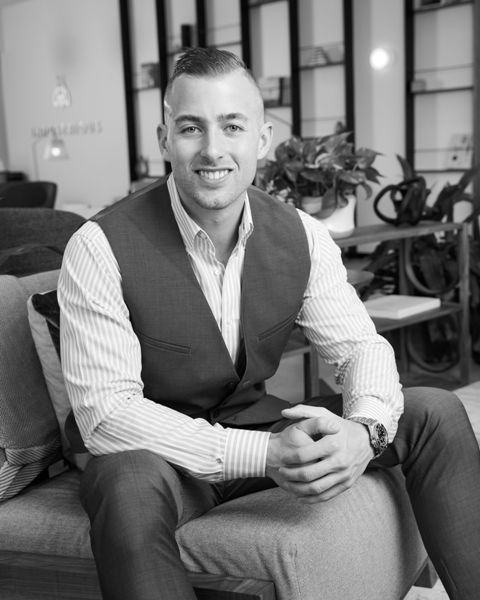
Photo by Michael Williams
Jon Boles
A self-described serial entrepreneur, Boles has launched eight successful brands, with his latest endeavor, Avintiv Media, being recognized as one of the fastest-growing marketing agencies in Phoenix. He has helped build and consult for more than 140 brands across the country, grossing myriad millions of dollars for his clients—and making a life-changing impact on many of them—along the way.
Your newest endeavor, Avintiv Media, launched just over a year ago. Why do you think this company has found so much success so quickly?
I believe that we are taking a unique twist to the digital marketing agency arena. We truly know the ins and outs of running and scaling an actual business and its operations; not just perspective or "strategy." We spend a lot of up-front time with our clients or prospects in our discovery process. We don't take projects on unless we are absolutely certain that it will be a home run for them. I didn't start this business to ever take advantage of entrepreneurs; I started it to give them their life back.
What is the most rewarding part of your career?
If I had to choose just one thing, I would have to say seeing my clients’ lives change is the most rewarding part of my job. We've had more than 10 clients this year alone in our offices crying to our team sharing with us how we've actually changed their life. Not only has their business grown more than they ever imagined it could, but they have a better relationship with their significant other and their children. I don't know many other marketing agencies that change lives like we do. We focus on people, not just the business, and that makes it so rewarding in itself.
Have you always been driven?
There were some troubled times in my past where I truly got off track. I was at a very low point in my life after some family issues happened. I hit rock bottom and did a complete 180. Short answer, yes, I have always been driven and motivated. I've had a chip on my shoulder since a young age as teachers would make fun of me daily saying that I would never amount to anything or be wealthy. I've used that to become wealthy in my mid-20’s but have now shifted to live more of a vulnerable and authentic life and drop the chip that was on my shoulder to get to the next level of business.
How do you balance a busy professional life with a personal life?
I've been trying to "perfect" this for nearly 10 years of being an entrepreneur. I now believe that every person is fully in control of their day regardless of how much they think that isn't true. You will find time for what you care about. I've been able to run three companies, 20-plus employees and a relationship because I choose what's most important to me. For instance, I turned all notifications off on my phone except phone calls. I rarely check social media unless I want to inspire or add value to people by a post or an Instagram story. I don't consume social media, I produce it—big difference. I also start every morning 6 to 8 a.m. reading my favorite book of choice with my phone off. That is the part of my day that I have full control and am in my zone.
Your next initiative is to give back to fellow entrepreneurs. How do you plan to pursue that?
I am a venture mentor at Arizona State University where I donate my time every month and help fellow entrepreneurs enhance their knowledge and grow their businesses. I also have launched a group business coaching course for entrepreneurs called Visionaries Academy. This is an online course for entrepreneurs where they follow the course and then have weekly group coaching with me or one of my coaches. I'm in the process of writing my first book toward the end of this year/early 2019 that goes over my 10 years of entrepreneurship journey and even what led me to it. I've been told by some of the most powerful coaches across the country that my full story is extremely powerful and needs to be shared with the world. I am also dedicating the rest of my life to being the most authentic and true version of myself so fellow entrepreneurs can see my life for what it is versus the highlight reel other influencers put on social media to sell them something.
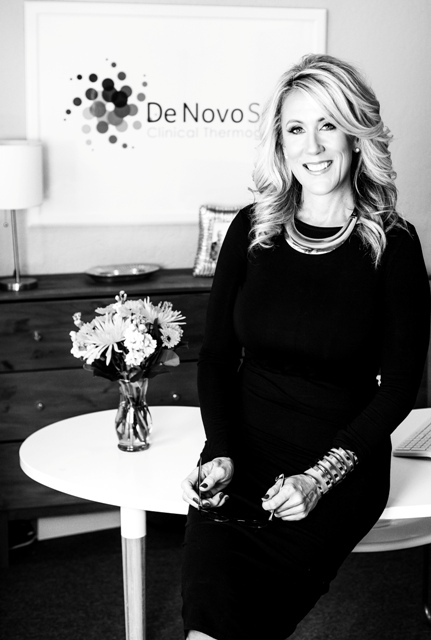
Tina Clemmons
Clemmons, the president and founder of De Novo Scan, LLC, is giving Valley women options when it comes to taking control of their health with non-invasive thermography.
Where does your interest in the health field stem from?
My interest in the health field stems from being an overweight kid growing up. I had struggled with weight all the way through high school. By the time I was being nudged to start thinking about a major for college, I chose Dietetics and went on to become a registered dietician. I later became vice president in medical equipment financing and loved my job. When 2008 happened, everything in my corporate world changed. I wanted to do something more rewarding, which led me to thermography.
How is thermography technology and how is it impacting the medical realm?
Thermography has been around since the 1950’s. In 1982, it was FDA approved as an adjunct for breast cancer screening. It basically got pushed aside when mammography became the gold standard for breast screening. Thermography has been making its way back into the spotlight since I started De Novo Scan, LLC in 2012. Thermal imaging (thermography) uses an infrared camera that measures temperatures radiating from the body and converts those temperatures into color. Infection, inflammation and blood supply to a growing tumor will show up in the hotter colors such as white, red, orange, etc. There is zero radiation or compression used in thermal imaging. The camera never touches the body. Not only can thermography give you information about your breast health, but it can see lymphatic congestion, hormonal imbalance and periodontal infections that often get missed by dental X-rays. It is known that there is correlation between disease in the mouth and disease in the body.
What is the most rewarding part of your career?
I get to help women! And since partnering with breast cancer expert, nationally recognized board-certified breast surgeon, Dr. Christine Horner, MD, FACS, who interprets all of my scans, I’m giving these women the very best information they can get when it comes to thermal imaging, consultations on their health, diet and lifestyle as it pertains to breast health. Dr. Horner is a former breast surgeon specializing in breast reconstruction after mastectomies. She is also an author who wrote an incredible book, “Waking the Warrior Goddess,” on breast cancer prevention and on fighting it if you have it. Not only is being able to provide thermal imaging services to women rewarding, but to have Dr. Horner reading the scans and providing her expertise on breast health/breast cancer is icing on the cake.
What influence do you hope to have on the Valley?
I’d like for the community to know that thermography is an important, non-invasive breast (and health) screening tool and that when they come to De Novo Scan, they really are getting top-notch, professional service and information.
In what ways do you give back to the community?
While there are several companies that are reimbursing for thermography, not all insurance companies are yet on board for reimbursing so it’s an out-of-pocket expense that some can’t afford. I donate several breast scans throughout the year, and I always provide Breast Cancer Awareness Month specials to help those who can’t afford these scans.
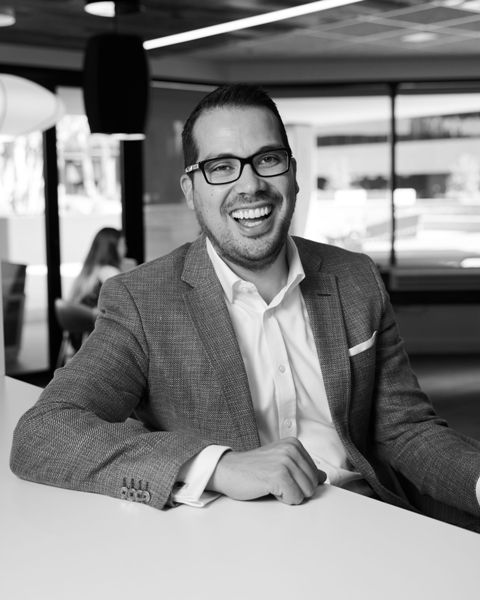
Photo by Michael Williams
James Goodnow
The new wave of millennial management is coming, and Goodnow is at the vanguard. At 37 years old, Phoenix-born and Harvard-educated Goodnow, who was named one of “America’s Techiest Lawyers,” is the newly-elected president and managing partner of Fennemore Craig, P.C., Arizona’s oldest law firm and one of the largest firms in the Southwest.
Why do you think you have been so successful in your career?
I had fantastic role models when I was a child. My father was a lawyer, but he was a family man first. My mom got her Ph.D. when my brother and I were young—she jokes that she wrote her dissertation in the only place she could get some peace with two wild kids running around, the bathroom. They were always driven, but they had their priorities straight. They set a high bar I strive for. I started working at Fennemore Craig as a summer file clerk when I was 18. I was assigned to sit at a work station outside of the office of one of the members of the firm’s management committee. One day, following a big win he had on a case, he took his entire team out to a celebratory lunch. On his way out the door, he invited me to join. I told him I hadn’t worked on the matter, but he said, “You’re here, James; you’re part of the team.” That moment had a profound impact on my life, inspiring me to come back to Fennemore Craig after law school, and teaching me that successful lawyers can be good people, too. I believe that even more today.
What is the most rewarding part of your career?
I love the culture we’ve built at Fennemore Craig, and how we’ve evolved into a modern-day law firm. We wear jeans to work but are still professional. We’re proud of our 130-year heritage, but we’re always looking ahead and trying to innovate to deliver the best results for our clients. I approach my day-to-day work with the same type of energy, taking cues from my mentors. That’s not just inspiring and leading our team at Fennemore Craig, but it’s also learning more about our clients and finding new ways of delivering solutions for them.
Your book “Motivating Millennials” sold out its first printing within hours of its release. Why do you think there was so much interest?
It’s a ubiquitous topic—no matter the industry or the location, millennials are impacting the workplace. They also happen to be among the most reviled generations—we’re the generation everyone loves to hate. It was time to not just address that reality but also do some myth busting. Every generation takes joy in bashing younger generations; it’s gone on for as long as history has been recorded. The truth is that millennials are not going to ruin your workplace. And, if you harness their talents, they can make it better. Although it’s hard to generalize about 80 million people, millennials as a group tend to be collaborative, inclusive and creative—all while understanding technology in ways that those who didn’t grow up with it generally cannot.
You try to make it home to tuck in your two young kids every night. Why is that important to you?
My wife, Erin, and I made a commitment to one another that, no matter what’s happening with work, our family is the foundation. My kiddos, Kelly, 6, and Brody, 4, mean everything to me, and those hugs and giggles and boo-boo fixes are what fuel me during long days. As a child, I was fortunate to have a supportive family that was always there. My parents showed me that you could have a successful, rewarding career while also raising a family. Family isn’t negotiable.
In what ways do you give back to the community? I serve on the board of directors for Make-A-Wish of Arizona and the National Kidney Foundation of Arizona. My family also volunteers time with Boys Hope Girls Hope of Arizona.
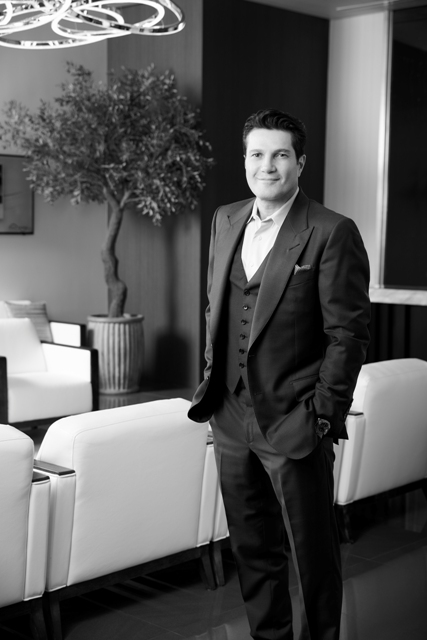
Photo by Michael Williams
Dr. Marc Malek
With extensive training from prestigious programs, a desire to give back and a dedication to helping patients enjoy improved bodies through precise results, Dr. Malek has built one of the best reputations in plastic surgery. The Scottsdale-based award-winning surgeon’s motto of “treat every patient like your own family member” ensures a patient’s trust and a tasteful, natural outcome.
What prompted your start in plastic surgery?
As a child, art was a passion. But by the age of 9, I was aware of my fascination with science. I became drawn to plastic surgery through a family friend as it intertwined both of my natural interests.
What is the most rewarding part of your career?
The most rewarding part of my career is the gratitude that I receive when helping others. The responsibility is so ominous, and I treat it with such care and attention.
What are the biggest challenges you face working in your field?
The challenges in my field tend to stem from the financial temptations that are at times seemingly too great for some surgeons to resist. Ill-advised procedures that are requested by some patients are too often performed, leading to both short- and long-term problems. I perform a vast number of corrective procedures on such patients who may not have been guided appropriately in their past. I have spent my life adhering to ethical principles that carried me through many years of schooling with an unwavering dedication to my patients. I always insist on identifying a clear need for a procedure that is done in both good health and good taste prior to offering it to a patient. My belief of “treat every patient like your own family member” has earned a reputation of genuine trust throughout the Scottsdale/Phoenix community, as well as regionally.
Are there certain advancements in your field that you are most excited about?
I have devised procedures that are specific for breast rejuvenation which is a substantial portion of my practice. They include internal suspension lifts for loose tissue as well as pocket re-contouring in revision breast implant surgery.
Is there a patient story that you are most proud of?
One of my most rewarding patient stories is a young lady who severed her left hand with a ceramic saw. I successfully reattached her hand, repairing bones, arteries, veins, nerves and tendons. She had a full restoration of normal function. Her life was so back to normal that she went on to ask me for a mommy makeover and facial cosmetic surgery. It is incredibly rewarding to know that rather than living the rest of her life in an impaired state, I had restored her life to such a normality that she was interested in cosmetic procedures.
What influence do you hope to have on the Valley?
My continued influence on the Valley is to be a genuine advocate to those who seek my help. The wish to guide my patients upon the most rewarding yet safe path yielding outcomes that are tasteful and natural. To always remember that I am still practicing safe medicine while I am performing aesthetic surgery.
In what ways do you give back to the community?
Over my 18 years practicing in the Valley, I have hosted numerous in-office events with each of those sponsoring a particular charity or organization. I believe that giving back is truly the greatest reward to ourselves and is the best part of being human.
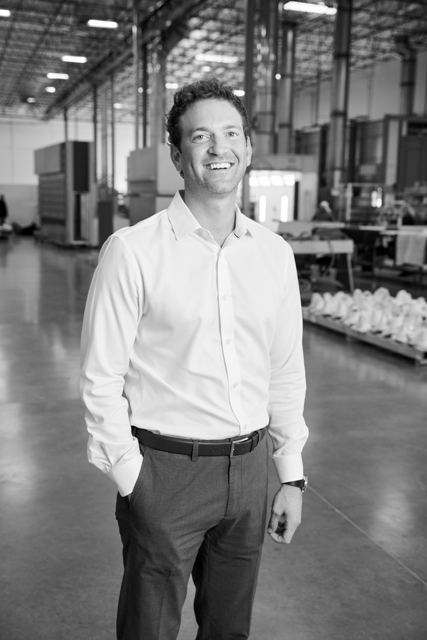
Photo by Michael Williams
David Baum
For nearly two decades, Baum, president of Trademark Visual, Inc., and his team have successfully contributed to more than 25,000 branding and installation projects throughout the United States. Clients include some highly recognized names: Amazon, Carolina Panthers, SoulCycle, DryBar, Revolve, Waste Management Phoenix Open, Children’s Health Dallas, Utah Jazz, Simon Premium Outlets, NCAA Final Four, CFP National Championship Game and many more.
How did you get your start in the sign industry?
There was an opportunity to purchase a small sign company in 2001. It was called 1st Signs and there were seven people working out of a tiny retail store. We acquired the company on Sept. 10 and our family took ownership on Sept. 11. Obviously, this was a terrible day and a scary time in our world. The economy struggled and as a result, the following years would be a struggle for us as well. But we pushed forward, kept fighting and worked extremely hard. We repositioned the brand and renamed the company Trademark Visual in 2009. We've been in business for 17 years now and thankfully, each year has been better than the last.
What is the most rewarding part of your career?
I still think about that little sign shop I saw for the first time after I graduated college. Our evolution has been strong, steady and incredibly rewarding. It has been a true joy to help lead our team. Some have been with us since the very beginning, and we've been able to promote from within, to hire the most talented and passionate and, ultimately, build an all-star team. We now have people throughout the United States operating our additional offices. We are a long way from that little sign shop, but Trademark is still a family at our core. Building that family, providing opportunity and watching people flourish is the most rewarding.
I understand you hope to rollout more offices across the country.
We really base our initial decision to expand into a respective region on what talent we can attract or re-locate there. Once we establish the team, we then look at the market size and what impact we can make. I am originally from Cleveland, and so knowing the region and its people, we have plans for a sister manufacturing facility in the Midwest. We are also currently looking into Colorado, Texas and Georgia.
What do you envision for the future of the Valley as a whole?
I think we will see a whole new tech market emerge over the next 10 years in Phoenix. Artificial intelligence and machine learning from Arizona State University, Chandler carving out a niche in autonomous vehicles, companies like Intel. We can continue to make great strides in these areas because of our access to a highly educated workforce, great climate and reasonable cost of living.
In what ways do you give back to the community?
I have been active in the Phoenix Thunderbird organization for over seven years. I am honored to be among the men who raise money to assist children and families, help those in need and improve quality of life. I am also an active member of Support Sky Harbor Coalition, NAIOP and Valley Partnership. I was a former member of Boys and Girls Club Executive Council. Trademark continues to support many local charities including: PANDA, Fresh Start, EC70, Waste Management Phoenix Open and Junior Achievement.
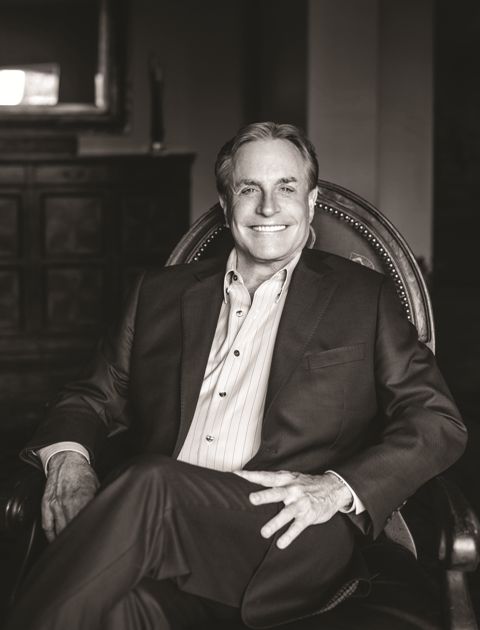
2018 NICHOLE KATHRYN PHOTOGRAPHY
William Drury
In his nearly 40-year career, Drury has built a reputation around the nation as a first-chair trial attorney who can successfully tackle high-profile cases. He has also made a notable impact outside of the courtroom as a co-founder of Make-A-Wish Foundation of America, which helps grant the wishes children with terminal or life-threatening medical conditions.
How did your interest in law come to be?
I have always been interested in history, politics, current affairs and high-profile jury trials. Since I was a teenager, I have known that I was destined to be a trial lawyer.
You have received many awards and accolades in your career. Is there one that means the most to you?
I am honored to have been recognized by my peers in publications such as The Best Lawyers of America and Southwest Super Lawyers. I have also been named as one of the Top 100 Lawyers in Arizona by Arizona Business Magazine.
What is the most rewarding part of your career?
The satisfaction of having successfully represented my clients, both individuals and corporations, and the knowledge I have gained in the process. When I take on a case I “become the client”—just as an actor takes on the role of his or her character. I endeavor to learn all I can about the people and/or the business I am representing. Trial law requires constant learning. I have had exposure to multiple disciplines such as medicine, engineering, product design, manufacturing, physics, etc. I don’t know many careers that offer one the opportunity to gain knowledge about so many different industries and professions.
You are a co-founder of Make-A-Wish Foundation of America. What inspired you to create this foundation?
It all started in 1980 with a 7-year-old boy with leukemia named Chris Greicius. He was terminally ill and had one wish: to be a police officer for a day so he could “catch the bad guys.” Several people within the community pulled together to make this happen. Chris passed away soon after his wish was granted. Those involved realized what they had done for Chris could be accomplished for other terminally ill children. When I heard Chris’s story and was asked to join the group to help co-found a formal organization, I jumped at the opportunity to bring smiles to children and their families.
In what other ways do you give back to the community?
Until recently, I was a member of a local bank board and the Drake University Board of Trustees. I was involved in the Rotary Club and have served on the board of directors of the Sun Devil Club and Sun Angel Foundation. I also provide support to Colleen’s Dream Foundation, which was founded by my daughters in their mother’s name to raise funds to fight ovarian cancer.
What influence do you hope to have on the Valley?
Professionally, I plan to continue mentoring young attorneys to become trial lawyers. Personally, I will continue to encourage local Arizonans to contribute their time and resources to causes which benefit the community. A small effort locally today can result in a global impact tomorrow.
What is next for you?
Professionally, I will keep practicing law because it is what I love to do! Personally, I hope to become involved in an organization started by my aunt many years ago known as The International Book Club which donates books to various countries all over the world to promote literacy.
What are some of your free-time passions?
I have a love of learning about history, so reading is one of my favorite things to do. I also enjoy traveling, working out, golf and spending time with my daughters, their husbands and my six grandkids.
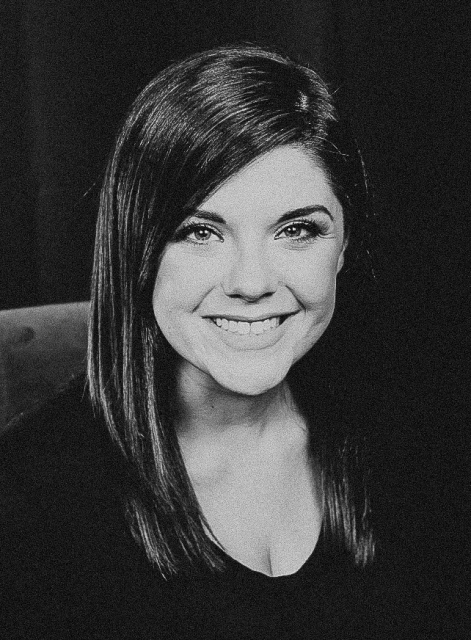
Elexsis McCarthy
One might call McCarthy an accidental inventor, having created the Original MakeUp Eraser after using a robe to wipe away makeup one day more than 10 years ago. Now, via her genius beauty product that is sold worldwide, McCarthy hopes to reduce the amount of landfill mass worldwide as she continues to create jobs for local workers.
What is the Original MakeUp Eraser?
The Original MakeUp Eraser is a reusable makeup removal cloth that erases 100 percent of makeup with just water. It is reusable, machine washable and will last three to five years.
Did you have interest in the beauty world before discovering this product?
No, not really. I wore makeup, but I bought most of my makeup at the drugstore. I was not a beauty maven, that is for sure. But, now I have more of a passion for makeup and know all the brands because my life mission is to remove that makeup with just water.
Your invention created dozens of local jobs. How do you feel about that?
I love being an Arizonan, and it honors me to bring jobs in Arizona. I hope to create even more, as our years go on.
What is the most rewarding part of your career?
My employees and local vendor relationships. My signature block [on my e-mail] ends with “dedicated to your success,” which I live by. I believe there is nothing better than enriching other people’s lives. Watching people blossom into their position and grow is amazing. I also love supporting local businesses. There is so much business right here in Arizona.
What are the biggest challenges you face working in your field?
Biggest challenge is being in the inventory business. Someone once told me, “You are either lucky or wrong.”
What influence do you hope to have on the Valley?
Both my husband and I are interested in public service. Being business owners, we would love to help our community unite and help both employers and employees enrich their experience in the Valley of the Sun.
In what ways do you give back to the community?
We are very involved in our local community. We love to dedicate our time to helping people in need. In fact, my next business venture will be working with the homeless.
What are some of your free-time passions?
Spending time with my four children. I have two teenagers, an 11-year-old and a 9-year-old. I give them all my free time. We stay super busy with sports and school!
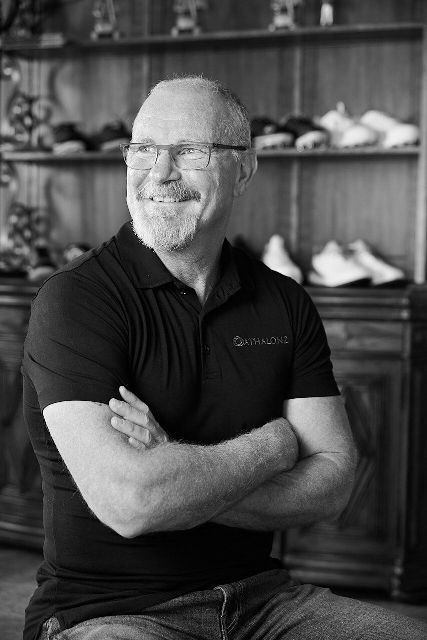
Photo by Michael Williams
Tim Markison
Though Markison has made a name for himself as the founder and CEO of Athalonz, a thriving performance athletic shoe company, his main mission is to stop the vicious cycle of child abuse and be a voice for its victims.
I understand you have shoes for golfers in the works?
Yes. Our golf shoes incorporate the same technology as our turf shoes and cleats. Plus, we created a new tread pattern that enables foot rotation in a desired direction and restricts rotation in undesired directions. We call it our “Grip & Glide” tread, which further improves the ground-body connection. Our golf shoe will help golfers hit the ball farther and with greater control.
Your bigger purpose with Athalonz is to bring a voice to victims of child abuse, as a percentage of all sales go to Safe at Home. Why is that important to you?
Yes, we are donating five percent of our profits to Safe at Home, which helps prevent child abuse and helps victims recover from being abused. This is an important issue to me because I was sexually and physically abused as a child. Being a victim of child abuse dehumanized me. I was made to feel less than, to feel worthless, to feel stupid, to feel that I was a bad person deserving of being beaten. These messages were ingrained into me and that’s how I saw myself. I spent years in therapy, studying, practicing self-help techniques and so on to chip away at my negative self-image to the point now where I like who I am. I feel I have a duty to speak out against child abuse, to share my story, to be a voice for victims that are not yet ready to speak out for themselves, to promote healing, and to stop the cycle of child abuse.
Athalonz started as a small start-up and now has national distribution. Why do you think you have been so successful? There are several reasons. First, I wanted to make a positive difference in the world through sharing my story for the first time. Second is perseverance; very few things have come easily. Most have required a lot of hard work, overcoming obstacles, making adjustments and a belief that things will work out. Third is continuing to work on myself. To be a better person, to be healthier, and to be a better mentor.
What influence do you hope to have on the Valley?
My philosophy is to make my little piece of the world as good as I can for me and the people in it. As Athalonz reach grows, I hope to expand that philosophy throughout the Valley and beyond.
What are some of your free-time passions?
I enjoy physical activity: baseball, basketball, hiking, running, weight lifting and bicycling. I also enjoy learning. I am currently reading about quantum physics, its effects on people and the world we live.
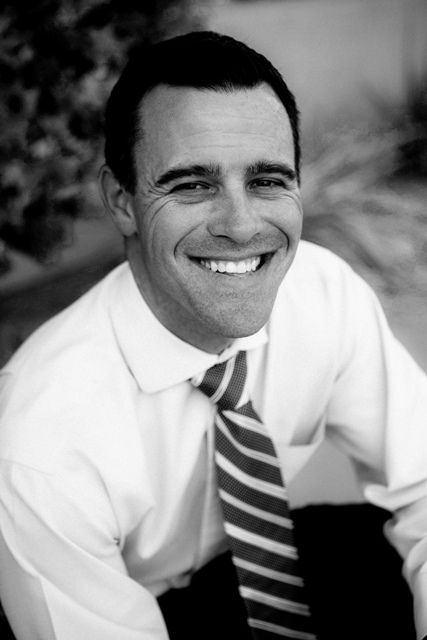
Photo by Michael Williams
Dr. Todd Mabry
North Scottsdale-based cosmetic dentist, Dr. Mabry, is not only lauded for improving smiles in the Valley for 17 years, but for his generous work with Smiles Beyond the Bars.
How did you get your start in the dental industry?
My mom was a hygienist, and my dad was a physician. I was always excited to hang out and watch them at work. I really enjoyed watching my mom and the dentist she worked for interact with patients and the relationships that they had with the patients. I knew it would be a great job for me because I love to work with my hands and the precise nature of the job and find this rewarding.
What is the most rewarding part of your career?
I love cosmetic dentistry and being able to improve a patient's smile. This could be a patient who was not able to smile because of a lack of confidence or just cosmetic issues. When we have completed treatment and their smile is awesome, we might even get a “I have not been able to smile like this—ever.” The transformation and emotion that we see in these patients is very rewarding.
Why do you think you have been so successful in your career?
It's all about patient care and the improvement of oral health. I think my success has come from treating people as I would like to be treated. With this big-picture approach, the plan is to promote long-term stability and health.
Do you have a client story that you have been particularly moved by?
I’m on the board of Smiles Beyond the Bars. Smiles Beyond the Bars is a nonprofit with a mission to change the lives of formerly incarcerated people by changing their smiles. This dental work helps recipients to successfully transition back into society. Most of the recipients need extensive dental work due to tooth loss. It takes a great dental team to help these patients get back into society and be able to smile. I feel so lucky to be able to impact someone's life and improve it so they have a chance to succeed. My dental team benefits from being able to meet these patients and see the transformation in their smiles and personal confidence.
You were raised in Phoenix. What have been the most exciting changes you have seen in the Valley?
The most exciting thing with all the growth in the Valley is that it still has a small-town feel. I hope that we can keep this going with all the growth.
In what ways do you give back to the community?
Outside of the dental field, I enjoy giving back to the community and getting my children involved. I think it's important to teach children to help everyone out when we have the ability.
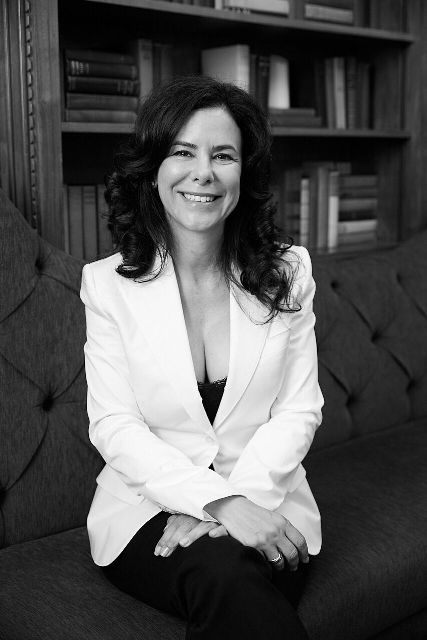
Photo by Michael Williams
Jamie Hormel
Hormel, along with her late husband Geordie Hormel, purchased one of the Valley’s favorite historical sites, The Wrigley Mansion, in the early 90’s. Since then, Hormel has worked to preserve and evolve this local point of pride so it can help create memories and togetherness for generations to come.
What does it mean to you that Wrigley Mansion is a point of pride for the Valley?
It means that my team and I are the caretakers of a significant place in the history of Arizona. When Geordie and I bought the Wrigley Mansion in 1992, it was very important to him that everybody should be able to enjoy this beautiful home, and I feel it is my duty to see that this goal is realized and continue the work that we began together.
What is the most rewarding part of your career?
I love that my business is about creating memories. It’s always fantastic when people share a story about The Wrigley Mansion and how it touched their lives, whether it be a wedding, a special birthday, brunch on Mother’s Day, or just a quick tour while they are visiting the Phoenix area.
What are your hopes for Wrigley Mansion for years to come?
I hope that the Wrigley continues to bring people together. As we continue to evolve at the mansion, we hope to provide even more opportunities for guests to celebrate life’s special moments with us.
What have been some of the most exciting changes that you have witnessed in the Valley over the years?
We have a very strong food scene now. When I moved here in 1991, we had limited choices for upscale dining or healthy options. Now, it’s booming, and I couldn’t be happier.
What do you envision for the future of the Valley as a whole?
I believe we are going to continue to grow and people will keep opening fun innovative places for shopping and dining. I love living in Arizona!
What influence do you hope to have on the Valley?
I try to be kind and to keep an open mind about everything. I hope that my decisions impact people in positive ways.
In what ways do you give back to the community?
I give back with donations, gifts and service to various organizations. I also enjoy keeping the doors to the Wrigley open so that we can share this beautiful building with both locals and visitors. We are always trying to think of community gatherings that can bring people together.
What are some of your free-time passions?
I enjoy being with my dogs and working out. I also love to travel.
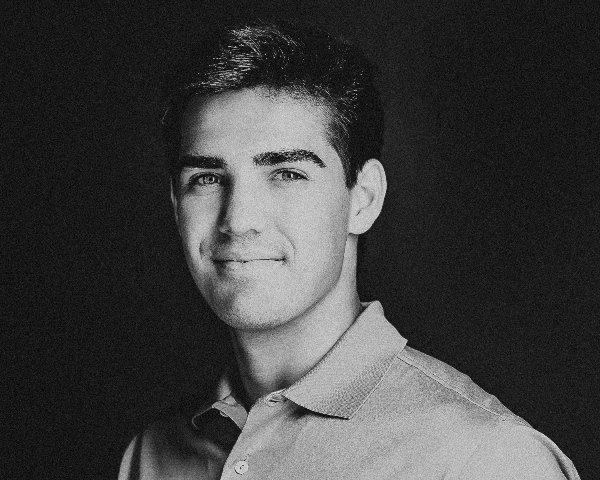
Jack Miller III
A nationally ranked four-star quarterback at Chaparral High School, Miller received scholarship offers from nearly 20 Division 1 colleges around the nation since he was in his early teens. Come 2020, though, you’ll see Miller sporting a lot of red. After careful consideration, this high school junior has committed to Ohio State.
Has football always been a passion?
Yes, I’ve always loved football but really began to realize I wanted to play in college and beyond when I was in seventh grade.
At what point did you know that you had a gift for playing football?
I was always naturally drawn to sports and tried pretty much all team sports including baseball, hockey and football. I realized I could throw the ball well, and once I started the quarterback position, I realized I had potential.
What do you love most about the sport?
Being around my friends and teammates, competing in a sport I love.
Who do you look up to?
My parents are who I look up to most.
Is there a player whose career you’d most like to emulate?
Russell Wilson. I respect his competitiveness and the leadership role he plays on his team.
What influence do you hope to have on the Valley?
A positive and caring one, and being an example for others.
In what ways do you give back to the community?
By mentoring and coaching others at youth football camps.
What are some of your free-time passions?
I like to spend time golfing and playing video games.
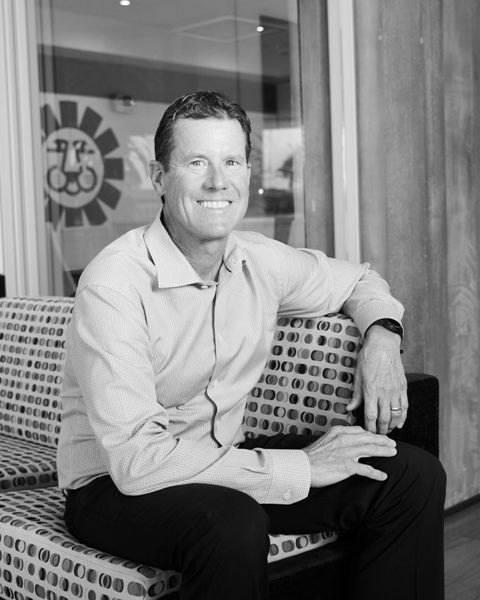
Photo by Michael Williams
Jim Lyon
Lyon is the third generation to lead Russ Lyon Sotheby's International Realty—a company that has been a local leader in luxury real estate for more than seven decades. This Arizona native and Scottsdale father has served as the Chairman of the Board since 2008.
You are the third-generation Lyon to lead your business. Did you ever have aspirations to do anything else?
I wanted to be a firefighter. I actually completed the training courses and was on that path when my father asked me to remain in the family business.
What is the most rewarding part of your career?
Witnessing firsthand our family company become so successful after more than 70 years, while staying true to its core values and expanding our reputation as the most respected name in real estate. Our slogan has always been that “our name is synonymous with fine properties since 1947.”
To what do you attribute this long-standing success?
Several things. First, staying true to our core values of loyalty and integrity, while providing the highest level of service to our customers. Second, the success of the company is a direct result of our agents, managers and staff. I could never do this alone, and my partners, Todd Gillenwater and Tom Locati, have been a large part of our success. I've known Todd all my life, and he took a leap of faith with me in expanding the company. Tom was our top producer for a while and after retiring, he joined as a partner, bringing insight to understanding agent's perspective. Deems Dickinson, our current president and designated broker, has been with the company for 37 years, bringing commitment and longevity to our management team. Finally, in 2008, we affiliated ourselves with Sotheby's International Realty, which enabled us to expose our properties internationally better than any other company. This has been a perfect match.
What do you hope for the future of Russ Lyon Sotheby's International Realty?
I hope that our company continues to expand and maintain our reputation in the Valley while keeping up with ever-changing business of real estate. We work hard at implementing new technology and systems that position our customers’ homes to be exposed locally and internationally.
What have been some of the most exciting changes that you have witnessed in the Valley over the years?
I used to go pig hunting and picnicking with my family on Pinnacle Peak and Scottsdale Roads when they were dirt roads. Growing up, Camelback Mountain was in my backyard so I used to climb up there when there were no trails and sleep up there. Probably the most exciting thing I've witnessed is the growth of the Valley. The development and infrastructure alone has allowed towns like Carefree, Cave Creek, Mesa and Chandler to all be connected.
As a father, what is the biggest lesson you hope your two sons learn from you?
To be true to themselves and through experiences and opportunities, help them find their passion.
In what ways do you give back to the community?
This is where I have to give all the credit to my business partner, Todd, and my wife, Robin. They are both passionate about giving back and making Arizona better. Todd started the Russ Lyon Charitable Foundation several years ago, and together with my wife, they organize volunteer opportunities for our agents and find ways to make a difference in communities all over the state.
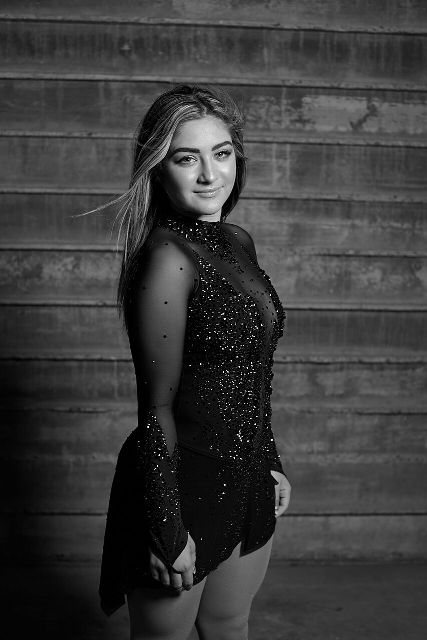
Photo by Michael Williams
Merriam Aazami
At the age of 4, 16-year-old Aazami realized that she had a gift for ice skating. Now, the Notre Dame Preparatory junior is a three-time gold medalist setting her sights on the 2022 Winter Olympics.
What do you love most about the sport?
There is something about this sport that makes me feel alive and gives me the ability to express my emotions on ice.
How do you balance school, ice skating and being a teenager?
I keep my stamina by picturing what success looks like in my mind. I consistently set goals and maintain momentum through achieving them.
What advice do you have for little girls who look up to you?
Never give up on your dream. If you want it bad enough, stay focused and fight for it. Consistency is truly the key. On a journey toward personal greatness, it’s important to know you will face setbacks.
Who do you look up to?
My family, who have always supported and guided me, as well as my coaches, who inspire me every day. Athletes such as Michelle Kwan, Sasha Cohen, Nathan Chen, Adam Rippon, Derek Hough, Tessa Virtue and Scott Moir, Yuna Kim, Evgenia Medvedeva, Michael Jackson and Kristi Yamaguchi.
Is there a skater whose career you’d most like to emulate?
Sasha Cohen, Nathan Chen and Adam Rippon. Cohen’s ability to break barriers in her free skates, due to her body lines and ability to point her toes during skating maneuvers like spiral sequences, triple jumps and footwork. Chen’s height and agility, with perfection in his jumps, pushes me to be more consistent. Rippon’s facial and body language on the ice brings out his personality and charisma. The constant connection with the audience causes the audience to be more engaged into the performance.
What influence do you hope to have on the Valley?
I've noticed that there aren't as many female athletes as there are males. I hope more female athletes can be encouraged to fight for their dreams. In addition, I want other athletes to get inspired to continue with their sport and reach their goals.
In what ways do you give back to the community?
I’m the Figure Skating Ambassador for The Warrior Up to Win program. It’s a free program for kids who make a sport out of eating healthy. The program is available online (warrioruptowin.com), which you can do anywhere you go. I encourage healthy eating and a healthy lifestyle. At Notre Dame Preparatory, we have a culture of gratitude by completing a minimum of 30 hours of community service. I believe gratitude unlocks the fullness of life; those who are grateful are best at adding value to others through appreciation. When we realize how much we’ve been given, we have so much more to give.
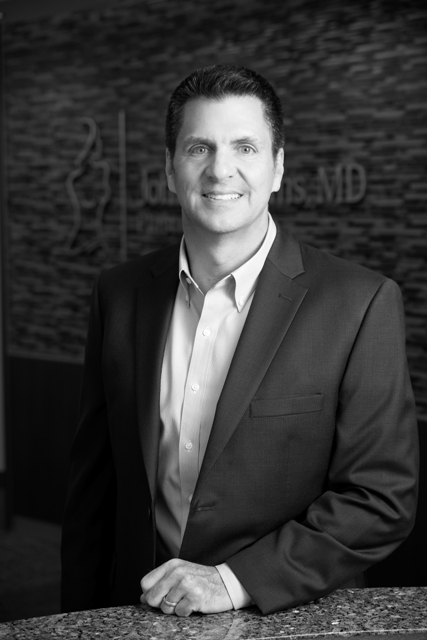
Photo by Michael Williams
Dr. John Williams
Dr. Williams has grown a reputation as one of the area’s top board-certified plastic surgeons known for his meticulous skill and keen eye for aesthetic balance. He counts local celebrities, athletes and fellow physicians among his patients. He has practiced in Scottsdale for 20 years.
What prompted your start in plastic surgery?
I became interested in plastic surgery during my general surgery residency. I was fascinated with the surgical expertise of plastic surgeons, which included the ability to operate on any body part from head to toe and on any tissue type. I was intrigued by all of the subspecialties within the field, including reconstructive surgery after trauma, cancer extirpation, congenital malformations, burn reconstruction, microsurgery, hand surgery, craniofacial surgery and, of course, aesthetic surgery. I also loved the challenge of solving difficult surgical problems that require multiple surgical techniques and an in-depth 3D knowledge of human anatomy. All of this combined with an artistic eye for the aesthetics of the human body, balance and proportions drew me into the specialty.
What is the most rewarding part of your career?
I am honored when patients choose me to be their surgeon and to help them achieve their goals through surgical or non-surgical procedures. That is an incredible responsibility that I do not take lightly because I have the opportunity to profoundly affect their lives in a positive way. Not many careers offer that kind of satisfaction.
What are the biggest challenges you face working in your field?
Unfortunately, within the specialty of aesthetic surgery, there are many physicians practicing who call themselves “cosmetic surgeons.” They are not board-certified plastic surgeons and have little or no training. As members of the American Society of Plastic Surgeons and the Arizona Society of Plastic Surgeons, my colleagues and I spend a significant amount of time educating patients on how to look for real board-certified plastic surgeons to make sure they will get the best (and safest) outcome possible.
Are there certain advancements in your field that you are most excited about?
The advances in non-surgical aesthetic procedures, driven by cutting-edge plastic surgical research, will continue to revolutionize the field. New technology is rapidly expanding the choices we have for non-surgical procedures that, one day, will most likely take the place of many of the time-honored surgical procedures. We are still a few years away, but I can imagine it won’t be long before we will be able to achieve incredible results without ever having to touch a scalpel.
What influence do you hope to have on the Valley?
When I started my career, I was focused on reconstructive surgery following trauma to the face and body, reconstruction following cancer surgery or repairing injuries to the hands. It was incredibly rewarding to be able to help someone return to their lives and their professions and be able to perform their job or be happy with the way they look. When I decided to focus on aesthetic surgery over a decade ago, I was just as amazed at the impact this type of surgery can have on a patient’s life. Since then, I have been working with patients to help them ignore the stigma surrounding plastic surgery and try to understand the benefits of being confident in yourself and your appearance and how that can impact all aspects of your life. Unlike many offices in the Valley, I personally perform all of the exams, the surgery and all of the post-op care to make sure the patient receives the customized treatment they deserve. What better influence can I have than to be able help people improve their lives on a daily basis?
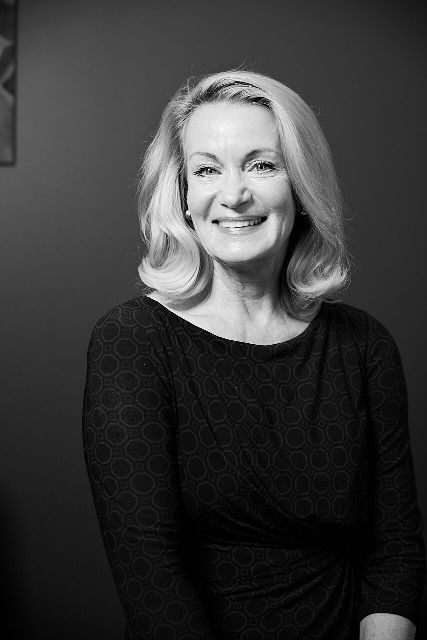
Photo by Michael Williams
Rachel Sacco
Has Old Town seemed more vibrant lately? Have you noticed more big-time events making their way through Scottsdale? You have Sacco, president and CEO of Experience Scottsdale, to thank.
You are considered the heart and soul of the local hospitality industry. Why do you think you have been so successful in your career?
I’ve been in this business for nearly 40 years and have promoted Scottsdale for more than 30. The thing that keeps me going is my love for this community. I care deeply about Scottsdale’s residents, business owners and employees. I care deeply about Scottsdale’s nine million annual visitors. But this work takes so much more than just love. Much of my success can be traced back to research, strategy and partnerships. Every program and initiative Experience Scottsdale tackles is grounded in industry research, trends and strategies. As a membership-based organization, Experience Scottsdale relies on partnerships with area tourism and hospitality businesses. And as a nonprofit entity, Experience Scottsdale depends on relationships with government officials in the City of Scottsdale and Town of Paradise Valley. My team and I work hard to maintain these relationships and ensure our partners receive a strong return on their investment.
On any given day, there is something new and exciting developing in Scottsdale. Is there anything that you are personally most looking forward to?
I’m excited about the renewed focus on the heart of our community–Old Town Scottsdale. Through the five-year tourism strategic plan, the City of Scottsdale has identified ways to improve Old Town for both the visitor and resident, from pedestrian pathways and bike trails to wayfinding signage and shade. Old Town has a new marketing campaign, and in recent years, the area has seen an influx of new and improved events, like Canal Convergence and Scottsdazzle, as well as new restaurants, lounges and boutiques.
What do you envision for the future of the Valley as a whole?
The Valley is going to be known as best destination for hospitality in the country. Whether someone is coming to Arizona for a mega event like the Super Bowl, a business meeting or a family reunion, they will encounter a welcoming destination where the people are friendly and the businesses are hospitable. They will see the beauty of the Sonoran Desert, feel safe in our streets, and move through the community with ease.
What influence do you hope to have on the Valley?
I hope my legacy is one of collaboration. Throughout my career, I’ve strived to bring together Valley cities and towns, destination marketing organizations and hoteliers. In the early days of Experience Scottsdale, we convinced competing hoteliers to participate—for the very first time—in a joint marketing campaign. To this day, Scottsdale-area hoteliers understand the importance of collaborating to promote the destination as a whole. Several years ago, I organized a consortium of destination marketing organizations, and together, we’ve worked on bids for Super Bowls and Final Four Championships. That consortium—made up of the likes of the Arizona Office of Tourism, Visit Phoenix, Tempe Tourism Office and more—continues to meet on a regular basis. Although we all may be friendly competitors, we can help each other be more successful. And it’s so enriching to work in an environment where everyone succeeds.
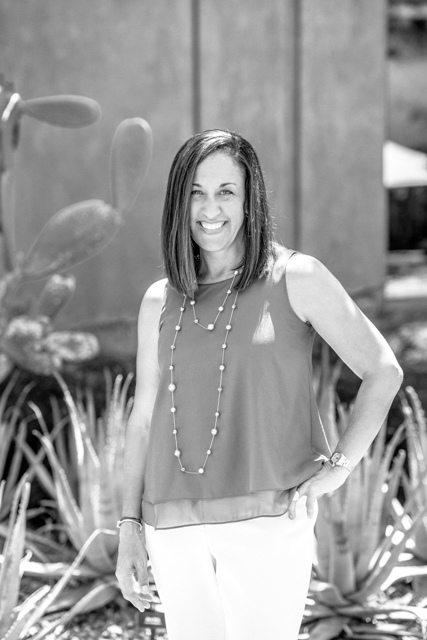
April A. Salomon
Salomon has been an integral part of the Musical Instrument Museum (MIM) since its inception in 2007, aiding in everything from exhibit design to collection acquisition. Today, she is at the helm of the world’s only global musical instrument museum as the executive director.
You have held positions everywhere from the Smithsonian Institution to Heard Museum. What is it like working within a museum with a focus on music?
Music touches everyone, everywhere around the world. It is incredibly gratifying to be surrounded by something so familiar, yet completely new, but music is a language that speaks to each person uniquely. As the core of the MIM experience, that’s pretty powerful.
Do you have a particular love or appreciation for music?
Having both Puerto Rican and Cuban roots, I grew up listening to quite a bit of salsa and merengue, in addition to other genres of music, but being exposed to music from around the world has further broadened my interests and appreciation. I am currently enjoying music by The Wild Feathers and Django Festival All-Stars.
What do you hope for visitors to get out of their time at MIM?
Our primary objective is to ensure the best guest experience possible. We want guests to feel welcome, have fun, learn something new about music and culture, while spending meaningful time with family and friends.
What is the most rewarding part of your career?
Having been part of the organization since its inception, I have most enjoyed witnessing MIM’s growth and success in just over eight years. Remaining focused on our founding principles has helped us become an internationally recognized world-class institution and industry leader among arts and cultural organizations. It has been an incredible privilege to work alongside such a talented team whose passion, commitment and creativity continue propelling MIM forward.
What influence do you hope to have on the Valley?
I hope that as a result of my leadership and partnership with MIM’s founder that this institution continues to positively impact Arizona’s economy as well as the cultural vitality of the Valley.
Personally speaking, I am extremely proud to be among so many influential female leaders within this industry and would like to see even more women at the helm of these important organizations
In what ways do you give back to the community?
I am actively involved with the ASU Community Council, along with several of my peers from the nonprofit community. I also volunteer regularly at the Salvation Army and work with the elderly at a local care facility.
What are some of your free-time passions?
At the moment, I am training for a marathon and have re-learned how you’re supposed to run. I was unaware of how many things I was actually doing wrong but with just a few changes, I’ve made some good progress. I assume that will still be true when I’m at mile 21.
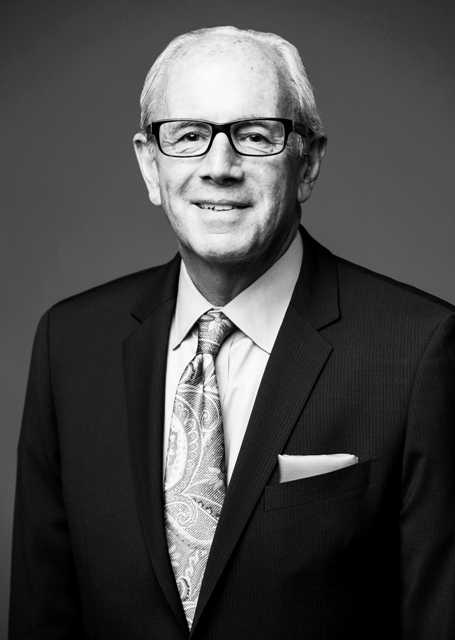
Mark Vinciguerra
Vinciguerra joined The Phoenician in 2003, though he has more than three decades of executive experience in the hospitality field. As the general manager of the regal resort, he oversaw the extensive transformation that touched nearly all aspects of the resort—from the spa to the restaurants to the pools. With this makeover, The Phoenician solidifies its spot as one of the top luxury destinations in the nation.
What is the most rewarding part of your career?
The most enjoyable aspect for me is the people. The hospitality industry is all about forming lasting relationships and making emotional connections, whether it is taking care of a guest or mentoring an associate.
What are the biggest challenges you face working in your field?
I think the biggest challenge is adaptation–knowing the difference between a trend for “now,” and a more lasting direction. The global economic climate also plays a major role in our industry’s success. Being able to embrace a new way of managing and/or operating—whether for the short- or long-term—can set you apart from the competition.
The transformation of The Phoenician is quite spectacular. Why was it needed and why now?
When The Phoenician was first introduced in October 1988, it epitomized luxury for a generation. Glamour, glitz and bling defined the era. Over the years, the preferences of the luxury consumer have evolved into something more experiential in nature. As a result, the time was right for The Phoenician to transform itself, responding to the wants and needs of the modern traveler.
What is your personal favorite aspect of the renovation?
We have truly transformed The Phoenician into one of the finest luxury resorts in all of North America. With this multi-year renovation, every aspect of the property has been touched, making it the most massive redesign since The Phoenician’s debut 30 years ago. “Tampering” with an iconic resort can be a risky proposition. However, by staying true to our award-winning culture, we have been able to introduce a variety of new and enhanced offerings that have created a more approachable, relaxed luxury—rooted in our legacy for providing the highest service standards.
What influence do you hope to have on the Valley?
The Valley, in my opinion, is the best resort destination in North America. We have so much to offer. I hope that what we have done here at The Phoenician will resonate across the full hospitality spectrum—from investors to other hotel brands. What The Phoenician’s transformation represents is the need to embrace a dynamic and evolving industry, collectively meeting the ever-changing expectations of the discerning traveler. As a destination, we must deliver on the consumer’s desire for diverse and signature experiences.
In what ways do you give back to the community?
I have served on the board of directors for several organizations, including the Fiesta Bowl, the Valley Hotel & Resort Association and the Scottsdale CVB (now Experience Scottsdale). What I am most proud of is the work our associates do as a team, and individually, for the community. Our parent company, Marriott International, embraces the “Spirit to Serve” year-round.
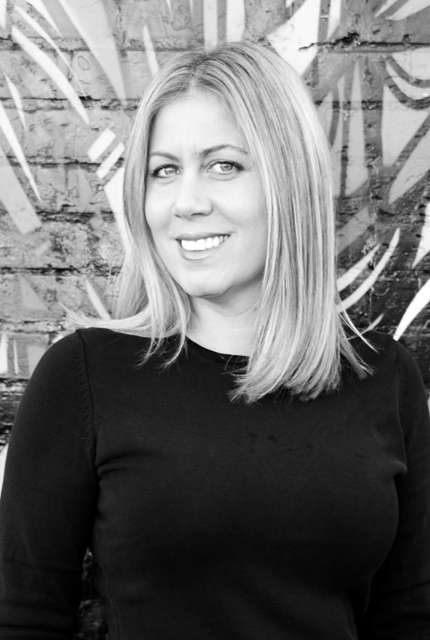
Kate Wells
With a passion for pint-sized Phoenicians, Wells co-founded Children’s Museum of Phoenix in the late 90’s, now one of the top kid’s museums in the nation. This fall, the museum expects its three millionth visitor to come through the doors of its fun-filled Downtown Phoenix outpost.
You co-founded the Children’s Museum of Phoenix 10 years ago. Tell me how this came to be.
Although the Children’s Museum of Phoenix as we all know and love opened in 2008, it was actually founded in 1998. It took us 10 long years to open it during which time we were a “museum without walls” while we raised money, renovated the historic Monroe School which became our permanent home, and built our terrific exhibits that are all inspired by education and play and designed and built by local artists. Our founding is very humble–a group of us that all shared a passion for young children, early childhood education and art got together in a living room, threw money into a bowl, and used that money to file our start-up nonprofit and our first traveling exhibit. The rest is history!
What is the most rewarding part of your career?
The work that we are doing here at the Children’s Museum is challenging our community to value and invest in the most important years of a person’s life–birth to five years old. Upwards of 90 percent of a person’s brain develops in that time, and all the important things we do to survive and thrive as adults is wired in us during these years. Every single day here at the Children’s Museum, kiddos have the opportunity to wire up their little brains with all the good stuff of childhood–and the grownups also get to learn about the vitally important things they can do to help children thrive during childhood.
You traveled the world in 2009. What were some of the great takeaways from your travels?
Indeed we did; 22 countries in 14 months when our daughters were 9 and 12. One takeaway was how children and women are treated around the world, and that in so many places they have no voice in their own destinies. Also, man’s impact on the environment is in-your-face all over the world—and not in a good way. Both of these issues–equity and the environment–were the two things that have stuck with all four of us. On a positive note, we were awed and inspired every day with the generosity of humanity, people’s ingenuity, and that people all over the world really just want the same basic things that we want.
What influence do you hope to have on the Valley?
Last week, a little boy who comes to the museum regularly as part of a Head Start program was here for his pre-school graduation fieldtrip celebration. I said to him, ‘You’re going to be a kindergartener now.’ He said back to me, “Yes, but I’m a Museumer too.” This is the impact that I hope to have on our community—that every child that comes through our doors sees themselves as something bigger and different and aspirational.
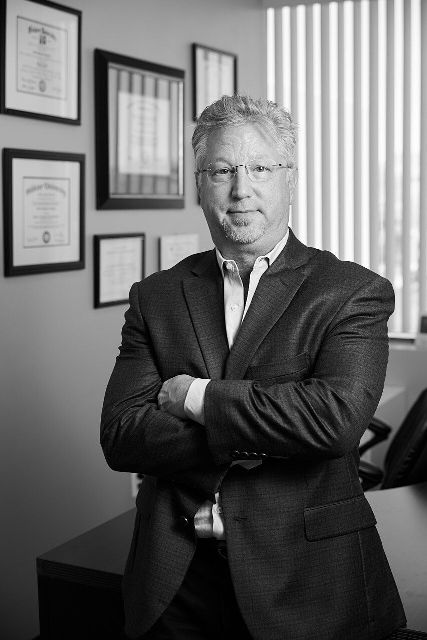
Photo by Michael Williams
Dr. Keith Chambers
Dr. Chambers founded Scottsdale’s Chambers Clinic nearly 10 years ago and thrives with a 95-percent referral rate. A full-service naturopathic practice center, it serves as a one-stop shop for all medical needs and is the only practice of its kind in the nation to offer services that include cardiology, oncology, hormones, aesthetics and more. Within the next five years, Dr. Chambers has his sights set on opening the nation’s first naturopathic hospital.
How did you become interested in natural medicine?
I wanted to be a doctor since I was a kid and was pre-med. I went into the conventional world, and it wasn’t really helping people the way I thought they should be helped. So I went off and did other things—went to business school, taught chemistry, built and sold businesses. I moved to Seattle in the mid-90’s. It was there that I learned about naturopathic medicine. I was enthralled with learning how to help people without side effects.
What is the most rewarding part of your career?
I think the people—seeing them change their lives, be happier, achieve the goals they have always wanted to achieve.
What challenges do you face in your field?
We have to be better than a practice that takes insurance. We continually try to improve and learn new treatments. We have to take more time, we have to be more emotionally intelligent with the patients and have better outcomes.
Do you face skepticism?
The tides are turning. We have full prescriptive rights—that said, 85 percent of the time we are able to have better outcomes using natural remedies than if your throw a pharmaceutical at it. If we don’t have results, I will refer patients somewhere else. Luckily, we haven’t had to do that.
Are there certain advancements in your field that you are excited about?
We haven’t even come close to seeing the capabilities of stem cells. I think that the things we can do with addictions are really extraordinary and life-changing. We try to keep in front of the curve.
What influence do you hope to have on the Valley?
I want to influence people to think about their health and take the next step to get help. We only can control ourselves, and I think that if there is a tipping point between apathy and action—if I can have an effect on that—that is a wonderful thing. We are working on building a nonprofit naturopathic hospital—the only one in the U.S. There are a lot of things that we can do with people who can stay overnight. The hospital will be a community outreach center, and we will teach people how to eat, how to cook, how to garden, what exercises to do, lifestyle changes, in addition to treatment therapies and overall primary care.
In what other ways do you give back to the community?
I have a nonprofit called Returning Warriors Foundation that gives back to our veterans.
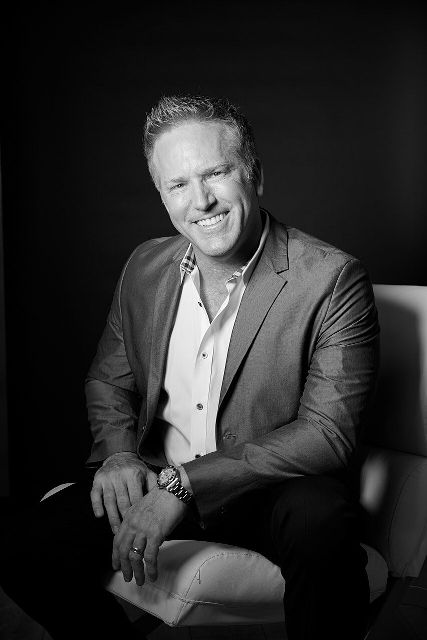
Photo by Michael Williams
Charles Small
As the owner of Glo Medspa, Arizona-born Small believes in affordable treatments at a high level of quality—all while making locals feel their absolute best.
How did your time as a critical-care nurse impact your current career as owner/founder of Glo Medspa?
The two are so different, but I do think that working in critical care makes you focus on every small detail and think outside the box.
What is the most rewarding part of your career?
The most rewarding part of what I do is helping to improve people’s self-esteem and feel good.
What are the biggest challenges you face working in your field?
The biggest challenge is finding what I can offer to set me apart from all the other medspas that are out there.
What do you consider up-and-coming in the world of medspa treatments?
The newest treatment is Fibroblast skin tightening, which I am seeing great results with. It is a hand-held device that permanently helps tighten loose skin. Until now, there have only been skin-tightening techniques that are temporary.
What influence do you hope to have on the Valley?
My approach to aesthetics is not about making money, but to help make people look better at an affordable price. We do not work on commission and do not have sales teams that try and pressure you into spending as much as possible. My hope is to make medspas a safe and trustworthy place outside of the plastic surgeon’s office.
In what ways do you give back to the community?
I believe in donating to different causes such as a leukemia foundation and domestic violence [organizations]. I also do many free facial injections for people suffering from slight disfigurement from congenital defects as well as surgical scars.
What are some of your free-time passions?
I enjoy traveling, golf, and spending time with my family and friends.
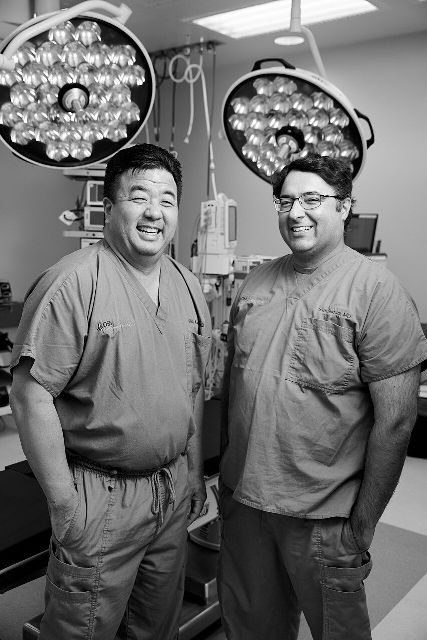
Photo by Michael Williams
Dr. Rick Low
As the leading key opinion robotic surgeon in the United States, Dr. Low’s motto, “Faster, Smarter, Better, Safer,” has been the turning point for skeptics across the robotic field. He has performed more than 1,000 robotics operations and is well on his way to transforming his practices, Desert Surgical, into one of the leading general surgery practices.
What inspired you to make your career in the medical field?
Both of my parents are science teachers and, as a precocious child, I began reading science journals at a very early age and became interested. At age 8, I chose my medical school (John Hopkins) and my specialty (neurosurgery). After doing neurosurgery at Hopkins, though, I realized it was not what I wanted to do and became a general surgeon.
What are the biggest challenges you face working in your field?
The hardest thing both in my field and in life is “people don’t know what they don’t know” and making someone understand and see something that they don’t know exists or don’t know can become a reality is the most challenging. Robotic or computer-assisted surgery was one such topic that I really worked to become a reality beginning in 2007. Then, surgeons and hospitals thought it was “unnecessary” or “stupid” or “a waste of money and time.” Over three years, from 2012 to 2015, I trained more than 400 surgeons in 200-plus operating rooms, met with more than 1,000 hospital administrators and had more than 200 surgeons from around the world (including most of the surgeons doing robotics in Phoenix) in my operating room learning about robotics. Robotic and computer-assisted surgery is no longer new or novel. I am about to do the same thing again with more robotic technology and even bigger companies in the next two years.
What influence do you hope to have on the Valley?
I have either introduced, mentored or trained many of the surgeon doing robotics and computer-assisted surgery in the Valley and am referred to by them as the “old man” because of this. Even though these surgeons could be considered competition, I believe in the concept that “a rising tide lifts all ships” and never believed that the benefits of robotic and computer-assisted surgery are mine to use as a competitive advantage over others.
What are some of your free-time passions? I have six passions in my life and all of my free time (what little I have) is dedicated to them. They are my wife, Sophia, and my kids, Jordan, Kaleo, Kekoa, Kainoa and Kailia. Everyone knows that my entire focus even when working very hard in surgery is upon them and providing for them.
Dr. Sam Durrani
Dr. Durrani of Desert Surgical is well-known for his leading operations in pancreatic and oncologic surgery and advanced techniques in hernia repair and trauma surgery. He is on a noble mission to make quality healthcare affordable and transparent to all patients.
What is the most rewarding part of your career?
There is nothing better than making someone feel better. When patients are really ill and they look at you with despair, all their prejudices leave them and they look at you to fix them. There is nothing more rewarding than giving people hope and making them well and that helps me cope with the challenges of the healthcare system.
What are the biggest challenges you face working in your field?
Healthcare is broken; costs are out of control. There are unethical behaviors at all levels of the system and a few are corrupting the entire system and are consumed by their own financial gain. People are losing faith in the healthcare system, and we are bankrupting the country and our patients.
Has there been a recent advancement in your field that you are most excited about?
I think transparency of cost and outcomes is exciting. More and more insurance companies and hospitals are empowering patients to look for value-driven quality care, and I feel this is a promising horizon for my field. In healthcare, newer is not always better, but it is always usually more expensive, trying to figure out the balance between high-tech and cost-efficiency is challenging.
What influence do you hope to have on the Valley?
I want to make quality healthcare affordable. I want to help put an end to current unethical practices by trying to make healthcare costs transparent. I also want to help build a practice that is safe for young physicians to flourish without fear that they are being taken advantage.
What are some of your free-time passions?
Spending time with my wife and kids and my entire family is what I cherish most. It makes this demanding lifestyle worthwhile. I also love dining at the fine restaurants and watching the Buckeyes play football.

Photo by Michael Williams
Dr. Marnee Spierer
As the chief of staff and chief of Radiation Oncology at Cancer Treatment Centers of America, Dr. Spierer knows how earth-rattling a cancer diagnosis can be for a patient. That is why it is her mission to provide hope just when things may seem hopeless.
Why were you drawn to oncology?
One of my favorite monologues from literature is Atticus Finch’s closing remarks in “To Kill a Mockingbird.” He calls the court of law the great equalizer—how in a court of law, all men are created equal. Poor versus rich. Black versus white. Smart versus “stupid.” That is exactly how I see cancer/oncology. Cancer does not care how much money you have or don’t have. Your skin color. Your degree. Your political party. Cancer is also the great equalizer. And everyone deserves the best possible chance at beating it. I knew I wanted to commit my professional life to this disease and its treatment.
What is the most exciting advancement in your field currently?
Radiation technology changes rapidly. Through a variety of techniques, we are now able to give high doses of radiation therapy to cancerous tumors while still protecting normal, healthy organs. This allows us to give higher doses, killing more tumors. And we can now do this at the same time patients are receiving systemic therapy such as immunotherapy or chemotherapy.
What is the most rewarding part of your career?
I absolutely love the bond I am able to create with my patients. I know how scared and overwhelmed people are when they learn they have a diagnosis of cancer. The not knowing is terrifying. When I can help patients understand their diagnoses, their options—when I can give them clarity and hope—that’s the most rewarding thing I believe I can do.
What influence do you hope to have on the Valley?
Being diagnosed with cancer is incredibly frightening and humbling. Being armed with information about treatment options, outcomes, logistics of treatment—this all helps ease the fear. My hope is that more and more patients become empowered with knowledge of how best to approach their cancer. I am proud to be among the very talented physicians advancing treatment options for patients diagnosed with cancer so that we can conquer this disease one patient at a time.
In what ways do you give back to the community?
I was raised in a family committed to instilling in us the value of volunteering and community service. My husband and I are raising our two children in the same vein. We volunteer throughout the Valley (cleaning homes of single moms with cancer, working in a food bank, spending time with kids in shelters), are active members of Temple Solel and are philanthropic with both local and national charities including Arizona Assistance in Healthcare, Valley of the Sun JCC, Childhelp and Jewish Federation.
What are some of your free-time passions?
I am currently going to school for my MBA. As such, my free time is a bit few and far between! However, I love spending time with my family—whether dinners, game nights or just hanging at home watching a movie.
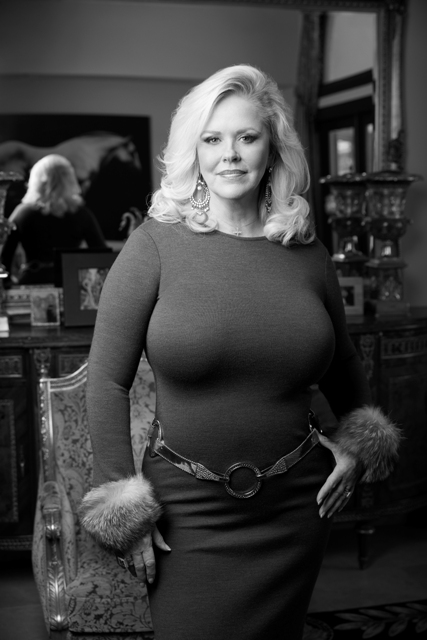
Photo by Michael Williams
Pat Bondurant
Bondurant, CEO and president of Bondurant Racing School, is at the forefront, along with her husband Bob, at the world-famous, Valley-based racing school that brings tens of millions of dollars to the Phoenix-area economy each year. Prior to her current career, Bondurant found success in the fields of aerospace, architecture, television, fashion and more. Most important, though, she has a passion for giving and has raised millions of dollars for hundreds of charities in the Valley and beyond.
You have worked in a variety of male-dominated fields. How did you push forward in those fields to find success?
There was no real push for me to get ahead or move forward in those male-dominated industries; it was honestly where I had the talent and hustled working the 12-hour days, seven days a week right along with the men. If the promotion or opening was there, and if it was offered to me, my responsibility was to take the challenge to do my best and advance. The bosses were not easy on each other or me, so if you carried your load, you maintained respect.
What do you hope for the future of Bondurant Racing School?
My desire for the Bondurant Racing School is to follow Bob’s lead on how he would like to see its world-renowned legacy continue. Bob is a very loved and respected celebrity world champion race car driver; he started the school 50 years ago and, as of lately, indicated that he would like to slow down. He has unapologetically spent his entire adult life working and living his passion—which has become my passion, too. As the president and CEO, I am ready to take us higher because right now we are at a real crossroads. Either start ramping up, growing in a new direction by offering much-requested Bondurant franchises around the world, continue as is or consider other options. We are a family-owned business. Our son Jason Bondurant is the VP and participates in all the family succession plan meetings on how to best direct Bondurant’s future.
You are dedicated to so many causes in the Valley. How do you decide which organizations to devote yourself to?
Charitable work is incredibly important to me and our family. My senior year in high school, I was in a very bad car accident. I was pronounced deceased at the scene of the accident. When I came back into my 17-year-old teenage body, I had been shown one profound thing about life: that it is a privilege to be here on this earth and that all of us need to live every day as if it’s our last. Once you do cross over, you better make sure that you did everything in your power to take care of those in need, both people and animals. My charity choices support my community, primarily for the children. Childhelp, St. Jude’s, Barrow’s Neurological Institute, Treasure House and Animal Healing Hearts will always be on the top of my list.
What influence do you hope to have on the Valley?
To show that it is possible to a full week, have an intense schedule to facilitate a company, all its employees, sponsors, family and yet somehow make the time to give of yourself to get involved in the charity world in any way that you can. I encourage everyone to start today, and find a charitable cause that you can relate to and give it all you have. It matters.
What are some of your free-time passions?
My free-time passions are to continue to give my husband the best days of his life right now; we are so much alike that we do everything together. Enjoy fabulous cars, friends, read good books, write daily on his autobiography, work on his racing archives, go to the movies and plays, great restaurants. My extravagant holiday-decorating skills are pretty famous and anything to do with arts and crafts just thrills me year round! Yep. I go from 7,000 RPMs in a race car shifting to full throttle on my hot glue gun trigger. You gotta love life.
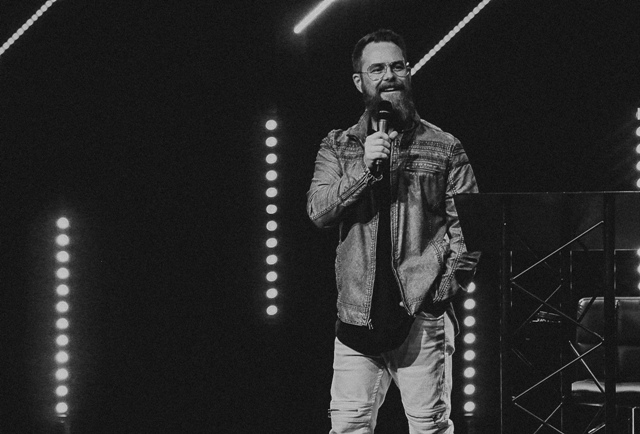
Travis Hearn
Hearn has been a pastor for more than 20 years, spending many of those years as a team pastor for MLB and the Phoenix Suns. Locals are invited to join the several thousand people who catch him every weekend at Scottsdale’s Impact Church.
What is the most rewarding part of your career?
Watching people find hope and experiencing brand new starts in life. Watching marriages being restored and addicts being set free.
What about the biggest challenge?
Our building size, limited parking spaces and bathrooms. We outgrew our building years ago and hold four weekend services to accommodate our family and the continued growth. We had several thousand people attend church each weekend, and we only have 45 parking spots, three women’s bathroom stalls and two men’s urinals.
Impact Church is one of the fastest-growing churches in the U.S. To what do you attribute this success?
I think there are many factors. It's a place where people feel welcomed, loved and accepted. It's a safe place for everybody. We also have an amazing ministry team, and our church family is the most loving group of people I have ever been around. We love people for who they are and where they are in life. We also believe church should be fun and full of life and laughter, so every weekend we throw a God-sized party.
What would you tell someone who hasn’t been to church in years and is teetering on attending again?
I think attending church—for the first time or the first time in a while—can be very scary and intimidating. We have a casual atmosphere with a one-hour service. We dress casual, offer yummy custom coffees, tasty Krispy Kreme doughnuts and snacks for the health conscious as well. Our services can be checked out at ImapctChurch.com or by downloading our free app by typing in "Impact Church AZ" into your app store.
What influence do you hope to have on the Valley?
That my life and our church is a true reflection of the love of Jesus Christ. That we help people find hope, peace and love.
In what ways do you give back to the community?
Our ministry is international. We serve in domestic and foreign missions through various avenues like feeding the hungry, giving away toys and clothes, building houses and training pastors around the world. We also have a weekly ministry called Celebrate Recovery for people struggling with hurts, habits and hangups.
What are some of your free-time passions?
My family and I love to travel and experience the world. And we are crazy about basketball at any level.
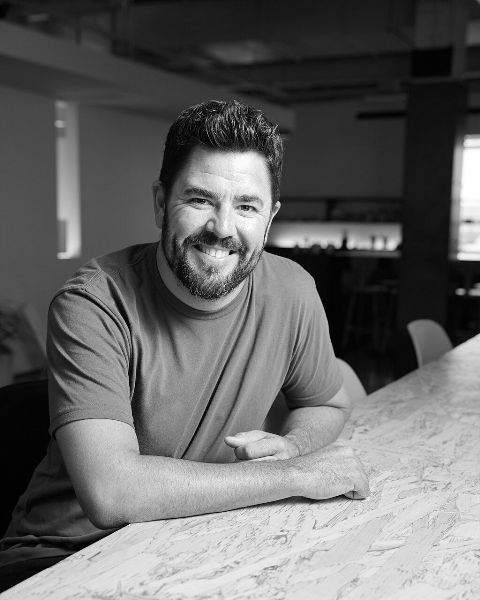
Photo by Michael Williams
Jason Schneider Law
After building dozens of homes for those living in hardship in Mexico, Schneider Law left his career as a firefighter to start IMISSION, which empowers families and communities to lift themselves out of poverty.
What inspired you to start 1MISSION? What is the mission of the organization?
Right out of college I fulfilled a lifelong dream of becoming a professional firefighter in Scottsdale. Although firefighting was both thrilling and rewarding, I felt God leading me to something more. I sought out new opportunities to make a difference, locally and around the world. This led me to volunteering in the barrios of Mexico, helping people who lived in horrendous situations. Focusing on housing, we built safe shelters for people living in cardboard boxes. After dozens of international trips, I began to understand that poverty is much deeper than its disturbing effects. It was going to take more than four walls and a roof to make a long-lasting, sustainable difference in the lives of those affected by poverty. I started envisioning an approach that focused not just on serving the poor, but empowering individuals in their struggle against poverty—building neighborhoods, and eventually, transforming entire communities. In 2008, I left the fire department and launched 1MISSION.
What is the most rewarding part of your career?
Empowering families, who a lot of times are stuck in the pits of poverty, with no hope out. Seeing them take steps toward a new life and knowing their trajectory has been changed forever is extremely rewarding.
What are your hopes for the future of 1MISSION?
As opportunities arise for us to partner with both funders and impoverished communities, we always want to be postured for action. We’re currently expanding our work to Hermosillo, Mexico, through partnerships with local and state government and Phoenix Sister Cities.
In your speaking engagements, what message do you strive to get across?
Most people aren’t in poverty because they choose to be. They lack real opportunities that are empowering, sustainable and dignifying.
You’re the father of three children. What is the biggest lesson you hope they learn from you?
To be a positive example of a father, husband, friend and community member that they can model as they grow.
What influence do you hope to have on the Valley?
To help shape a culture of social entrepreneurship rooted in generosity and love.
In what ways do you give back to the community?
I am the co-founder/board chair of missionaccomplish.org.
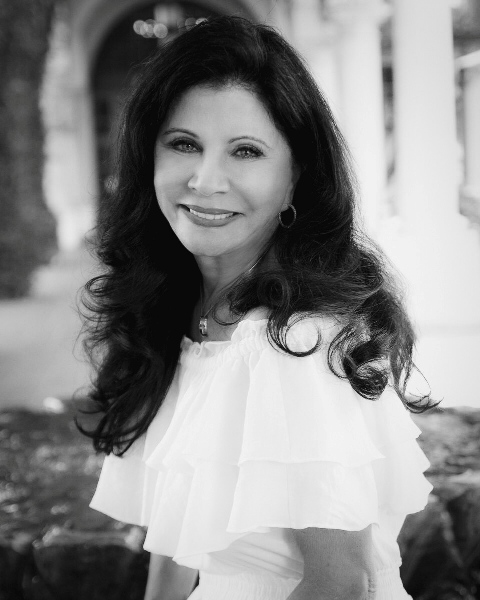
Debbie Gaby
She has one of the most recognizable faces—and voices—in the Valley thanks to years of her Sleep America commercials and radio spots. Though she sold the business in 2015, she is still among the local who’s who as a successful author and the founder and president of Debbie Gaby Charities.
You are dedicated to so many causes in the Valley. How do you decide which organizations to devote yourself to?
I follow my passion, and it’s never steered me wrong. I believe there’s good in all my affiliate charities. The pleasure of getting to help the less fortunate is such a blessing. I feel very grateful and fortunate to be able to do these things.
What inspired you to become an author?
I've worked very hard to be where I'm at. You see, I was born humble and didn’t have much to my name. After many years of hard work, I can say I’ve earned clout and respect. I will always be very grateful for being born in America where opportunity is yours. Anything is possible if you want it, the sky’s the limit. I never imagined I would ever write a book. But once I started writing, it just flowed, and I'm sure another book will be in my future.
What have been the most exciting changes in the Valley over the years?
I love the growth of the Valley and the melting pot of people from all over the United States. Many people find this place as beautiful as I did, and now we all call Arizona our home. Arizona skies are so amazing, and I love living here.
What’s next for Debbie Gaby Charities?
I see us a growing 501(c)(3). I need to attach my charity to a business. Perhaps a new sleep business. Who knows?
What influence do you hope to have in the Valley?
I hope to influence the younger generation to follow in my footsteps. You don't need to be born with money; you can work and earn it. In the United States, freedom gives you the liberty to do whatever you want and the sky’s the limit. I suggest you follow your dreams. Never give up because you deserve to live the life you want: "Just Do It!" I used to have that on my license plate because I believed it so. Lots of hard work and anything's possible.
What are some of your free-time passions?
I love to have friends to hang out with, go to dinner and celebrate life. We go to luncheons, dinners, movies. Support each other through good times and bad times; this is all part of our meaningful friendships. I love yoga, walking the dog and visiting friends. We love reminiscing about when we used to be a little crazy and a lot younger.
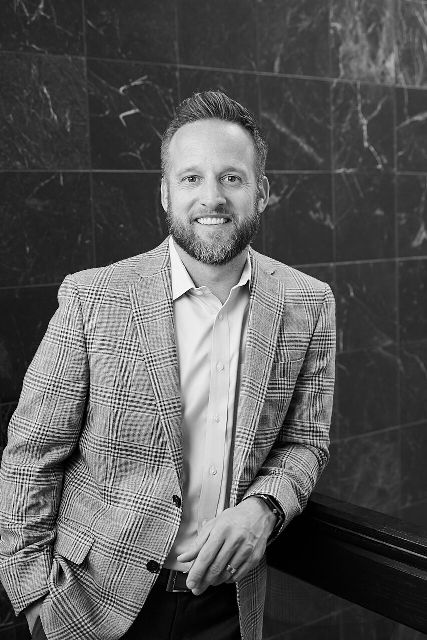
Photo by Michael Williams
Dr. Brian Harris
Not only is Arizona native Dr. Brian Harris one of the nation’s leading experts in cosmetic dentistry, he is so much more; he’s most proud to be a smile creator and a confidence builder. Dr. Harris owns and operates three Harris Dental locations with his father and brother, who are also dentists.
How did you get your start in the dental industry?
My father is a dentist so I grew up around dentistry and saw how much he loved what he did...it just made sense to follow in his footsteps.
You call yourself a “confidence builder.” Why is that?
I absolutely love the art of designing smiles, but my true passion is people. I love working with people to design the perfect smile and seeing the effect it has on their life. The before and after pictures are great, but it’s the transformation that happens three or six months down the road that is amazing to watch.
What is the most rewarding part of your career?
The creation of a new smile with each of my patients and the long-term relationships I build with them as we work together.
Do you have a client story that you have been particularly moved by?
I do. Andie. I had a chance to do a smile last year to a young woman who really struggled with her appearance and had been through some really tough things in life at such a young age. It’s been rewarding to watch her this last year and how much she has grown with a new job, a new relationship and a whole new outlook on life. It’s humbling to be part of such a special transformation both physically and emotionally.
What do you envision for the future of the Valley?
I am an Arizona native, and I feel like the Valley has grown and progressed so much in the last 20 years. People are taking notice, and that is why we have well-known companies from all over moving here to do business. I think we have some of the best healthcare professionals around, and currently 50 percent of all my smile design cases come from people out of state flying in for treatment. That statistic alone shows me that people are looking at the Valley as a place they can trust for healthcare specialists.
In what ways do you give back to the community?
We participate in Smiles for Life every year and donate all teeth whitening revenue for four months to charity. To date, we have raised more than $500,000 for children’s charities in the Valley including Phoenix Children’s Hospital, Phoenix Suns Charities, Tim and Willy's Kids Foundation and John Jay and Rich's Christmas Wish.
What are some of your free-time passions?
Snowboarding, racing triathalons and traveling with [my wife] Maury as she runs marathons all over the world.